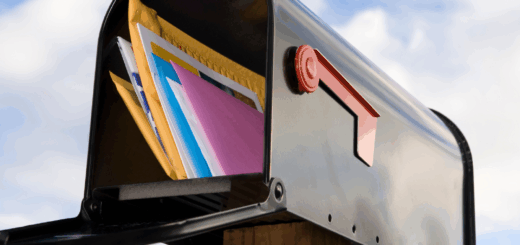Real Estate Postcards for Investors: How to Find Off-Market Deals and Build Seller Trust
For real estate investors, using real estate postcards is a powerful tool for both generating off-market leads and reinforcing credibility with sellers. Unlike generic advertising, a direct-mail postcard arrives in a property owner’s mailbox and says, “I’m actively buying, seriously committed, and ready to act.”
Open Letter Marketing highlights that one of the key advantages of direct mail is exceptional ROI and enhanced conversion and response rates
When done right, a postcard campaign can help you:
- Reach property owners before they list – giving you access to off-market deals.
- Establish trust and professionalism – making owners comfortable choosing you over agents.
- Build a persistent presence in the market – staying top-of-mind so when an owner is ready, they call you.
Targeting Off-Market Sellers
Identifying off-market opportunities means reaching owners who aren’t actively listed or working with agents yet. Here’s how postcards enable that:
- List Building / Data Selection
The right list matters. Open Letter Marketing emphasises “advanced list building” and precision targeting for campaigns.
Key segments for off-market investors include:
- Owners of properties with tax delinquency
- Absentee owners (living out of state)
- Properties nearing vacancy or with code violations
- Long-term owners likely ready to sell
- Owners of properties with tax delinquency
- Consistent Mailings
Off-market sellers often need time to respond. A one-time postcard might get ignored. Set up a repeating cadence: for example, every 30-45 days for 3-6 cycles.
Consistency builds recognition and trust. - Offer-Focused Messaging
On your postcard, you want a clear value proposition: “We’ll buy your house fast, no agent fees, any condition.” Make it easy for the owner to understand what’s in it for them. Use action-oriented language and a direct call to action (“Call us”, “Text us”, “Visit our site”).
The postcard should also include credibility indicators (see next section). - Tracking and Follow-Up
Use a unique phone number or URL on the postcard so you can measure response. Use this data to refine your list and messaging. Open Letter Marketing mentions “custom campaign tracking” as part of their service.
After the postcard arrives, ensure you’re ready to follow up quickly when a lead comes in.
Building Seller Trust with Your Postcard
Getting a homeowner to trust you is half the game. Postcards can help you build credibility and make you stand out.
Key Trust Elements to Include
- A professional, clean design. Our in-house design team helps your “brand pop” with polished layouts.
- A photo of you or your team (optional, but it helps humanize you).
- A clear statement of your intention (e.g., “We buy houses fast – cash offers – no agent needed”).
- Evidence of experience or local presence (“We’ve bought 100+ homes in [City/Region]”).
- Contact info and easy next steps (phone, website).
- A friendly but professional tone – use American English, active voice, avoid overly complex jargon or hype.
- Reassurance of fairness and transparency (“No agent fees. We close when you’re ready”).
Format & Design Tips
- Use a headline that grabs attention: e.g., “Own A Home In [Neighborhood]? We Want To Buy It.”
- Use contrasting colours and readable fonts.
- Make your offer the focal point.
- Keep text minimal; let the visuals and headline pull the reader in.
- Use a high-quality print and mail process so the piece looks and feels professional (which reflects your brand).
Frequency Builds Familiarity
When a homeowner sees your postcards regularly, you’re no longer a stranger — you become a known buyer. That familiarity boosts trust. Even if they don’t respond to the first piece, repeated exposure may lead them to choose you when they’re ready.
How to Structure Your Postcard Campaign
Here’s a step-by-step framework optimized for investors using real estate postcards:
- Define Your Target Market
Choose a geographic area or property type (e.g., 2-4 unit rentals in [City], houses in [ZIP code] with ≥ 10 yrs ownership).
Use list filters accordingly. - Design the Mailer
- Headline: Clear and direct about what you do.
- Sub-headline: Address the owner’s pain or desire (e.g., “No repairs. No commissions. Close in 7 days”).
- Body: One or two short sentences reinforcing your credibility and call to action.
- Contact block: Phone, website, maybe QR code.
- Branding: Your name/company logo, maybe a small tagline like “Your Local Property Buyer”.
- Back side (if double-sided): Additional credibility or testimonial, maybe a map or photo of a recently bought property in that area.
- Headline: Clear and direct about what you do.
- Choose Mailing Frequency
A good starting cadence might be:
- Mail every 30-45 days
- For a total of 6 mailings to the same list sample
- Re-evaluate the list if the response is low after cycle 3
- Mail every 30-45 days
- Track Responses & Analyse
- Use unique identifiers (phone number, URL) per campaign.
- Track which mailings prompted the call or form submission.
- Capture the data: who responded, what property, outcome (did you buy?).
- Use the data to refine: adjust list filters, redesign copy, test different mail sizes.
- Use unique identifiers (phone number, URL) per campaign.
- Follow-Up System
- Once a lead comes in, respond promptly (within 24 hours ideally).
- Use a CRM to track conversations and next steps.
- Stay professional, transparent, and helpful, that reinforces trust.
- Once a lead comes in, respond promptly (within 24 hours ideally).
Real-World Investor Success: Why It Works
- Bypass agents, competition, and online listings: Postcards allow you to reach sellers who aren’t actively listing their property yet.
- Higher perceived value: A well-designed physical mailer often grabs attention more than an email or social ad, especially for older owners.
- Local market familiarity: By targeting specific neighbourhoods and repeatedly mailing, you build a local “brand” as the buyer in that area.
- Measurable ROI: Since you track response, you know how many postcards produce how many leads, how many deals – you can optimise cost per deal.
The “Proven Mix Campaigns” and “Create Your Own Campaign” sections on the Open Letter Marketing website highlight that combining a strategic list + strong creative + consistent mailing yields strong results.
Common Mistakes and How to Avoid Them
- Mailing too infrequently: A single postcard won’t build enough familiarity.
- Using generic lists: If you don’t target the right owner profiles, your cost per lead will be high.
- Poor design or weak message: A cheap-looking mailer undermines credibility.
- No tracking or follow-up: If you don’t capture and act on responses, you lose momentum and waste budget.
- Giving up too early: Good campaigns often require multiple touches before results show.
Next Steps & Checklist
Select or refine your target list (owner type, geography, property profile).
Design a compelling postcard (headline, offer, credibility, contact info).
Determine your mailing frequency and budget.
Set up tracking mechanisms (unique phone/URL).
Prepare your CRM/team for rapid follow-up.
Mail the campaign, monitor results, and refine after each cycle.
Conclusion
For real estate investors who want to access off-market deals and build seller trust, real estate postcards are a proven direct-mail strategy. When you target carefully, design professionally, mail consistently, and follow up quickly, postcards can become a high-performing lead source that stands out in a crowded market.
By following the framework above, you’ll position yourself as a credible buyer, reach sellers before they list, and build a pipeline of deals you control. If you’re ready to take direct mail seriously as part of your acquisition strategy, postcards can be one of your most effective tools.
















